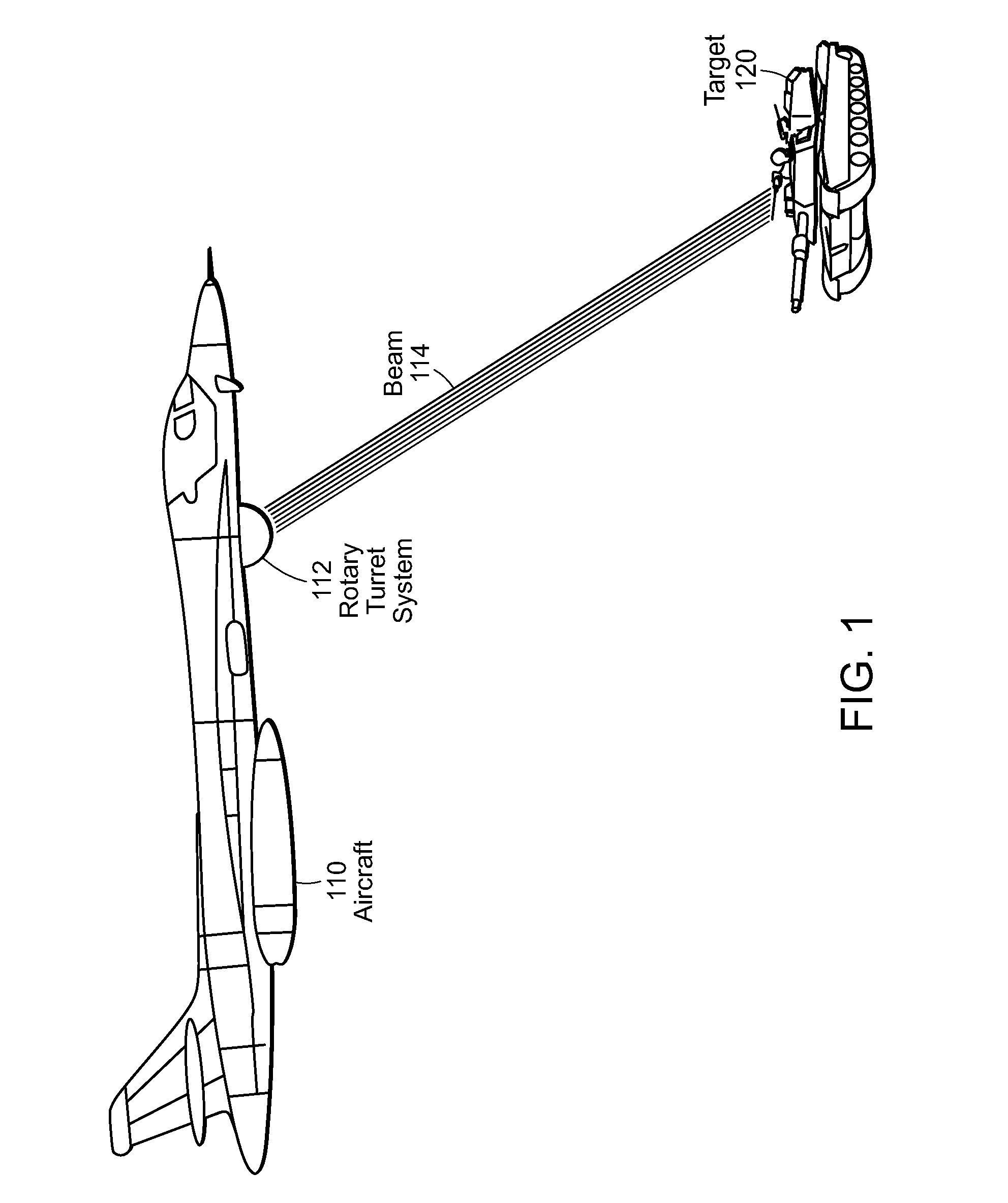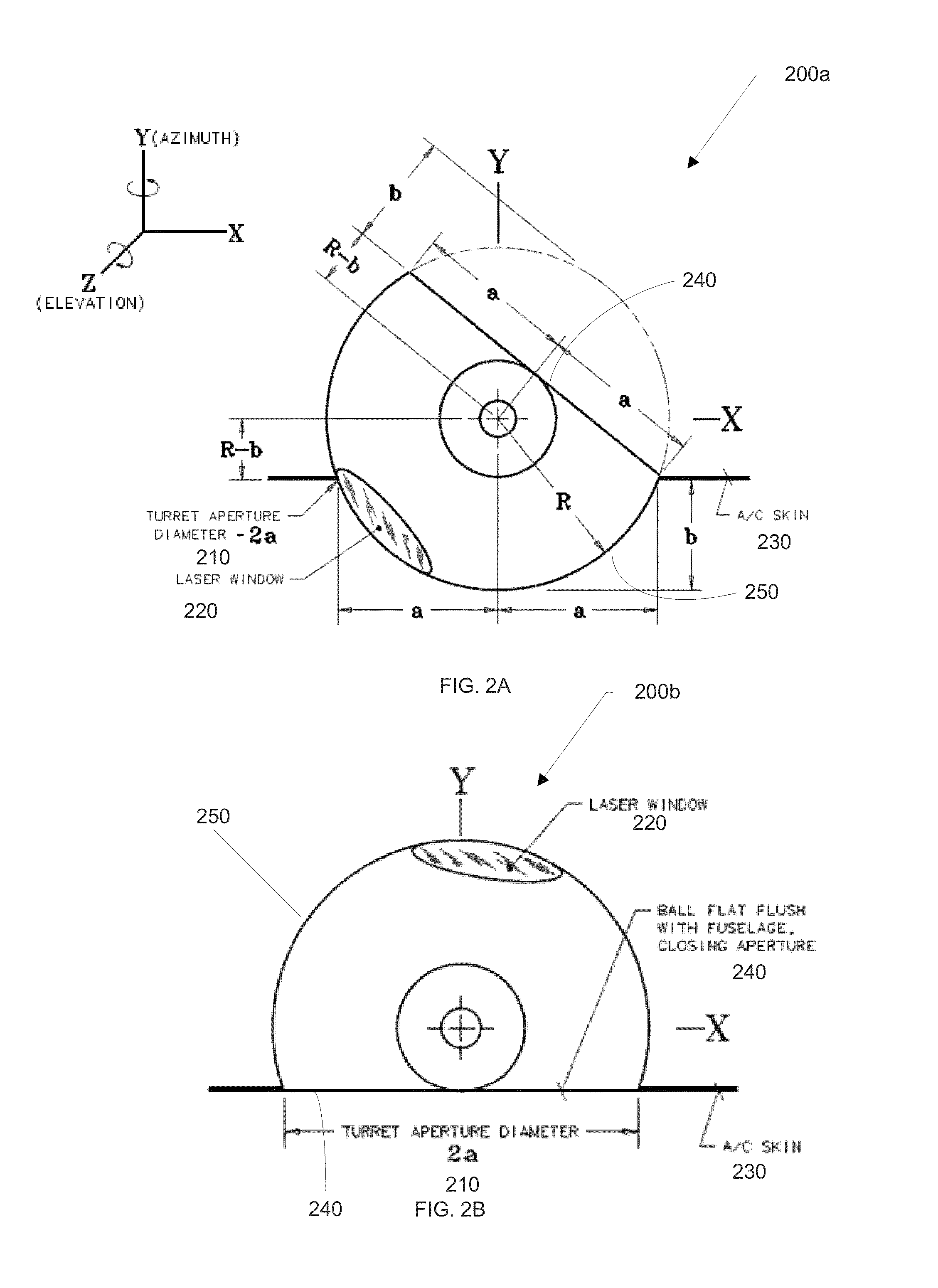Retractable rotary turret
a rotary turret and rotor technology, applied in the field of rotor rotors, can solve the problems of inability to use storage bays for other components, inability to match output beams, and generally insufficient operation of on-axis telescope configuration, so as to reduce the dead space in the deployment vehicle, maximize the volume available for other components, and reduce the deployment time
- Summary
- Abstract
- Description
- Claims
- Application Information
AI Technical Summary
Benefits of technology
Problems solved by technology
Method used
Image
Examples
Embodiment Construction
[0051]A retractable rotary turret and / or rapidly deployable high energy laser beam delivery system includes technology that, generally, provides a rapidly deployable turret system (e.g., a truncated sphere, a rounded protrusion, a rotating platform, etc.) that can be used with a deployment vehicle (e.g., low observability aircraft, aircraft, tank, helicopter, etc.) for delivery of a beam. The technology for rapid deployment of the mechanisms can be utilized to deliver the beam (e.g., laser beam, light beam, sensor beam, etc.) to a target. The technology enables sensitive components of the beam delivery system (e.g., sensor, telescope, window, etc.) to be protected during selected movements by the deployment vehicle (e.g., take-off and / or landing of an aircraft, movement of a tank through a forest, etc.) and rapidly deployed for beam delivery (e.g., two second deployment, etc.).
[0052]The technology can provide for deployment via a rotary motion of the turret system. The technology el...
PUM
 Login to View More
Login to View More Abstract
Description
Claims
Application Information
 Login to View More
Login to View More - R&D
- Intellectual Property
- Life Sciences
- Materials
- Tech Scout
- Unparalleled Data Quality
- Higher Quality Content
- 60% Fewer Hallucinations
Browse by: Latest US Patents, China's latest patents, Technical Efficacy Thesaurus, Application Domain, Technology Topic, Popular Technical Reports.
© 2025 PatSnap. All rights reserved.Legal|Privacy policy|Modern Slavery Act Transparency Statement|Sitemap|About US| Contact US: help@patsnap.com



